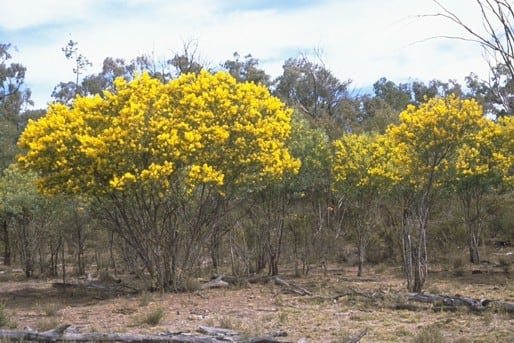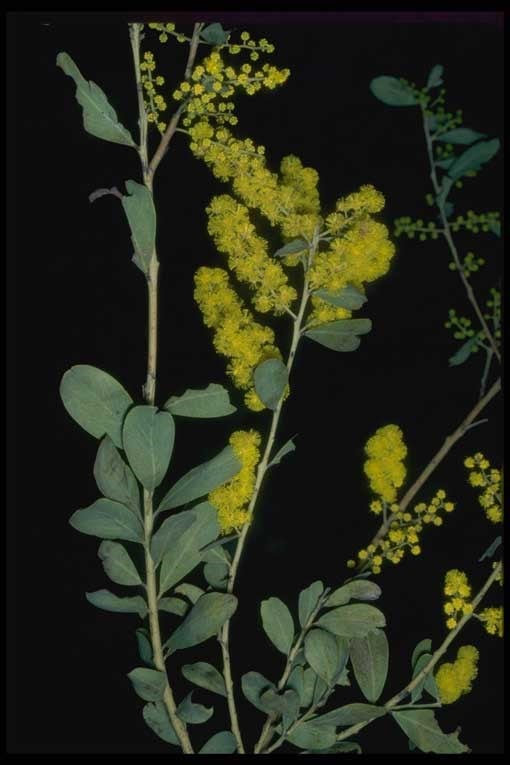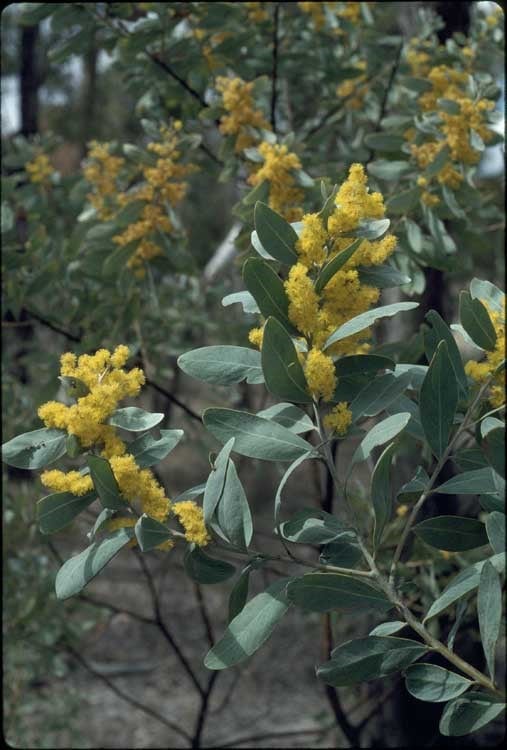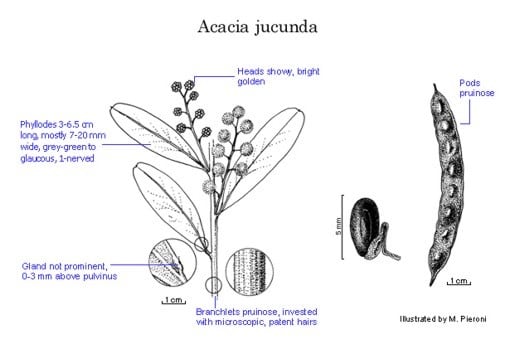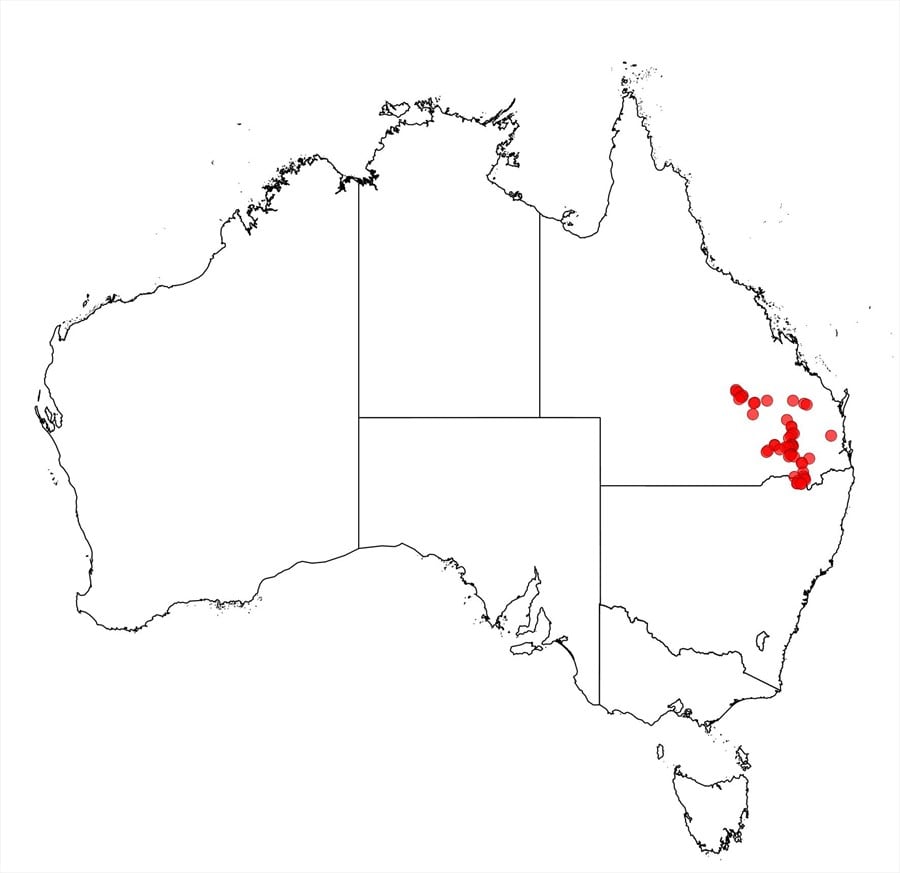Acacia jucunda Maiden & Blakely
WATTLE
Acacias of Australia
Family
Fabaceae
Distribution
Occurs from Mt Moffat (W of Carnarvon Natl Park) E to near Eidsvold, southern Qld, S to near Yetman in northern N.S.W.
Description
Shrub or tree 2–8 m high. Branchlets pruinose, microscopically hirtellous with hairs usually c. 0.05 mm long. Phyllodes usually oblanceolate and obtuse or retuse, 3–6.5 cm long, 7–20 (–23) mm wide, thin, grey-green to glaucous, glabrous or microscopically hirtellous on margins and/or midribs or rarely entire laminae, 1-nerved, finely penninerved; gland not prominent, 0–3 mm above pulvinus; pulvinus 2–5 mm long. Inflorescences usually 10–20-headed racemes; raceme axes usually 3–5 cm long, glabrous to subglabrous; peduncles 2.5–6 mm long, glabrous to subglabrous; heads showy, globular, subdensely 15–25-flowered, bright golden. Flowers 5-merous; sepals united. Pods alternately rounded over seeds on either side along midline, to 9 cm long, 8–11.5 mm wide, firmly chartaceous to thinly coriaceous, pruinose, glabrous; stipe slender. Seeds longitudinal to oblique, oblong, 4–6 mm long, slightly shiny, black, arillate.
Habitat
Grows in sand, loam or clay loam in open eucalypt woodland or forest, often adjacent to Brigalow forest.
Specimens
Qld: Moonie, c. 56 km WSW of Tara, L.Pedley 2361 (BRI). N.S.W.: Bebo State Forest, E of Yetman, R.Coveny 11682 & P.Wilson (AD n.v., BRI, CANB, K n.v., MEL n.v., NSW, PERTH, US n.v.).
Notes
The syntypes, collected from the northern extremity of the species range, differ from specimens elsewhere in having branchlet hairs 0.1–0.2 mm long, and narrowly elliptic phyllodes; in addition, sometimes their phyllodes are ±acute and their racemes to 9 cm long with up to 30 heads. An unnumbered, undated Bancroft collection, not regarded as a type even though it was collected from Eidsvold, is queried at BRI as being an A. jucunda × A. pustula hybrid (BRI340955 & 340956). It has narrowly elliptic, acute phyllodes and branchlet hairs 0.1–0.2 mm long. The possibility therefore exists that the type collection of A. jucunda may include hybrid elements.
Closely related to A. everistii.
An attractive, floriferous species which is cultivated to some extent.
FOA Reference
Data derived from Flora of Australia Volumes 11A (2001), 11B (2001) and 12 (1998), products of ABRS, ©Commonwealth of Australia
Author
B.R.Maslin
Minor edits by B.R.Maslin & J.Rogers
This identification key and fact sheets are available as a mobile application:
URL: https://apps.lucidcentral.org/wattle/
© Copyright 2018. All rights reserved.

